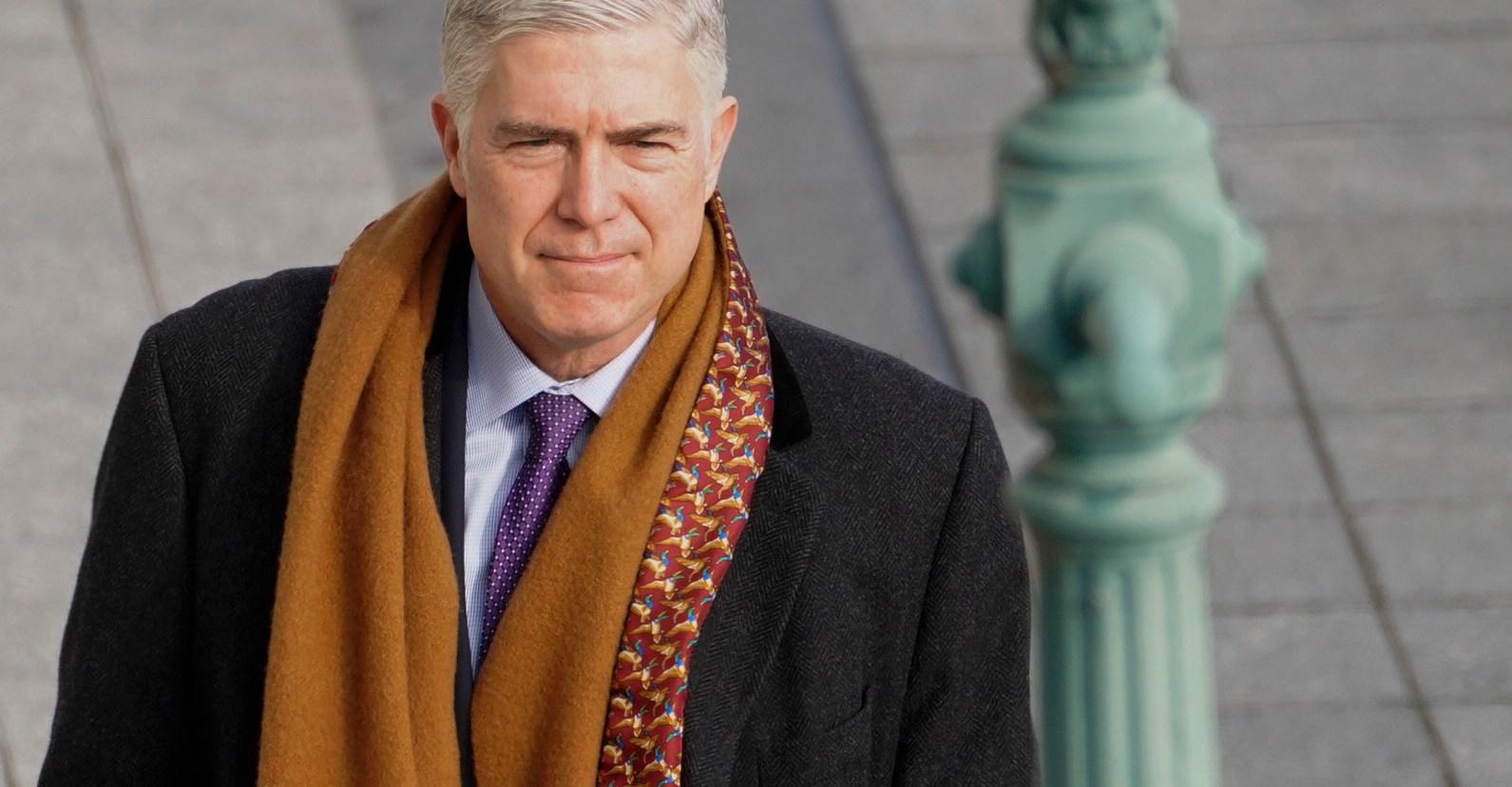States prepare to use Medicaid for rental assistance for the first time.


For more than a decade, researchers and advocates have argued that housing is a fundamental part of health care. Beginning this fall, for the first time, federal Medicaid dollars will start going toward paying some people’s rent.
It’s a significant policy development. Congressional regulations have long barred Medicaid funds from being used to pay for rent for people staying outside of nursing homes or medical facilities like hospitals. And while some states have used philanthropy or state-based Medicaid funding to pay for housing, those pots of money were extremely limited. Now, with rates of unsheltered homelessness reaching record highs in 2023, and rents growing to their most unaffordable levels ever, some states are preparing to use federal Medicaid dollars in the hopes that health will improve as housing stabilizes.
The Biden administration has made this possible through a longstanding Medicaid waiver program that allows states to test out new Medicaid ideas.
For nearly a decade, the federal agency that runs Medicare and Medicaid has been warming to the idea that housing could be health care. Since 2015, the Centers for Medicare and Medicaid Services has affirmed that Medicaid funds could go toward services that help people move into new housing, like moving costs or security deposits. In 2018, an influential federal commission told Congress that, while it’s long been known that poor housing conditions can worsen health outcomes, more recent data suggests that providing supportive housing to chronically homeless people also reduces ER visits in ways that case management or other outpatient services does not.
The “housing is health care” mantra got another major boost during the pandemic, when calls to stay at home to avoid catching and spreading disease grew louder and more urgent. Communities that halted evictions saw lower rates of Covid-19, a stark example of how access to housing is linked to health.
And in 2022, the Biden administration encouraged states to consider using Medicaid dollars for “health-related social needs” like housing, nutrition, and transportation — part of a broader White House effort to address social determinants of health.
“We think it’s incredibly exciting,” Dan Tsai, the deputy administrator and director of the Center for Medicaid and CHIP Services, told me. “This is a firm, clear stance, and we spent about a year of this administration working through how to define and create with guardrails the role of Medicaid in housing and nutrition.”
Tsai said their conclusion was based on both common sense and evidence-based practices, that for some groups of people, throwing “the same old against the wall” just would not drive better health.
Jeff Olivet, the executive director of the US Interagency Council on Homelessness, similarly told me he sees the ability to use Medicaid dollars for purposes like rent as “a real potentially game-changing set of supports” to help people exit homelessness and then stay stably housed.
Not everyone thinks this possibility is a good move for Medicaid, an already strained federal program with notoriously low reimbursement rates for doctors that disincentive treating patients. Just 3 percent of a state’s Medicaid spending can go toward “health-related social needs” like housing, but that could still easily amount to billions of dollars annually. Others doubt the claims that paying for housing will drive down overall government spending.
Sherry Glied, a dean and professor of public service at New York University, warned recently of “mission creep” in health systems, arguing that having hospitals and other medical institutions focus on the provision of social services could be a “dangerous distraction” from their core mission of serving patients, and one that policymakers should discourage.
The failure of Congress to dedicate more money to agencies like the Department of Housing and Urban Development is how we got to this point, said senior policy director for National Health Care for the Homeless Council Barbara DiPietro.
“More and more states are desperate to find any help, and that’s why they’re turning to Medicaid because they’re not getting real assistance from HUD,” she told Vox. “And Medicaid is an entitlement program while housing is not.”
The new pilot program authorizes Medicaid dollars for up to six months of rent and could herald much bigger shifts down the line if state results show improvements in health outcomes or cost-savings. It could also augur much larger shifts across state and federal governments to bring about more comprehensive visions of health care.
Arizona and Oregon will go first
The federal government has approved a handful of states to use waivers to finance rental assistance for up to six months. The first states to put this into practice are Arizona starting this October, and Oregon this November. The two are planning to target different subpopulations of Medicaid beneficiaries, and both are scrambling to figure out how to make this all possible given shortages of affordable housing.
Oregon’s Medicaid program currently provides coverage to roughly 1.5 million Oregonians, and the state estimates 125,000 of those people will soon be eligible to qualify for rental assistance under this new waiver. Oregon is opting to target beneficiaries at risk of becoming homeless, in effect using the funds as a preventive tool to help stave off the devastating economic, physical, and mental harms that come with losing one’s home. Individuals will literally get a “prescription” for housing.
To refer eligible people, the state will look to partner with community-based organizations. Housing nonprofits that get involved in this work will need to train their caseworkers as certified community health workers.
“It’s a little scary for them, because they don’t want to become medical providers in the same way a doctor doesn’t want to become a housing provider,” Dave Baden, the deputy director of Oregon’s Health Authority, told me. “We can’t medicalize the housing world.”
Over time, Baden hopes the state will be able to use this kind of funding to pay rent for people living on the streets, but he thinks Oregon needs to increase its housing supply first.
“This Medicaid waiver is not magically going to make housing exist, and I feel like we would have gummed our work to focus on those who were houseless to start with,” he said. “I don’t want to create a false benefit where we say, ‘Hey, Amy, here’s six months of rent, oh, I’m sorry I don’t have any housing for you.’”
Arizona, by contrast, is planning to target people designated as having a serious mental illness, building off a similar but much smaller state program that subsidizes rent for about 3,000 Medicaid beneficiaries each year.
That program, which is not time-limited, has been considered an extraordinary success: State data showed financing rent led to a 31 percent reduction in ER visits, a 44 percent reduction in inpatient hospital stays, and savings overall to Arizona’s Medicaid program of more than $5,500 per member per month.
“That’s one of the big reasons we felt so strongly about pursuing [the 1115 waiver] and being able to federalize some of that work,” said Alex Demyan, an assistant director with Arizona’s Health Care Cost Containment System. “We’re in a unique and advantageous position because we have a runway.”
With a significant affordable housing shortage, Arizona is looking to authorize a new kind of housing provider to help with supply issues, known as an “enhanced shelter.” These will be new organizations that contract with Medicaid to provide mostly congregate housing, and get reimbursed on a per-diem basis.
Demyan sees the opportunity to use Medicaid for rent as potentially transformative. “It’s a huge deal; this kind of cutting-edge work is really what makes working in Medicaid so rewarding in a lot of ways,” Demyan told me. “We get to play around in the sandbox of health policy and do things differently. I don’t think it’s any secret that there are better ways that we can do things.”
The fine print
As Oregon and Arizona — as well as other states that have applied to use federal Medicaid dollars for rent like New York, California, Hawaii, and Washington — prepare for the opportunity, they are hoping to build collaboration between government agencies, private companies, and community nonprofits that historically have rarely worked together.
“There has to be some system-level linkage between the housing and homelessness systems and the medical services; otherwise, we are very concerned about what will happen to people at the end of their six months,” said Marcella Maguire, the director of Health Systems Integration for the Corporation for Supportive Housing. “This funding will put more people into an already underresourced system. Long-term, I think it will reduce strain, but short-term it will increase strain.”
DiPietro, of the National Health Care for the Homeless Council, said she has some worries about how states might use this new Medicaid opportunity to jump people ahead of those waiting in the established line for subsidized housing, or even how receiving Medicaid funding could threaten their eligibility for other homeless services programs.
Olivet, of the US Interagency Council on Homelessness, said the eligibility issue is “certainly on our radar screen” and that his agency wants to serve as “connective tissue” to ensure federal policies are implemented in a strategic way. But state Medicaid departments have a “tremendous role” to play in shaping the specifics of each waiver, Olivet added, and coordination between health and housing providers “is where the real work will happen.”
Richard Cho, a senior housing and services adviser at HUD, told me there’s legal precedent for these kinds of eligibility concerns and that his agency is working closely to provide technical assistance to states.
When asked if he thinks Medicaid could one day fund rent for longer than six months, Tsai, of CMS, emphasized the importance of getting data first from these pilots. “It’s a huge first step,” he said. “No one believes Medicaid is here to supplant or replace the role of housing and nutritional agencies, but at the same time, clearly there’s a better way.”
The cost-effectiveness gamble
One undoubtedly appealing aspect of the policy proposal is that by paying for housing, Medicaid spending could ultimately go down over time, similar to how it worked with Arizona’s smaller program. It’s well-documented that people experiencing homelessness use significantly more health care resources on average than people with stable housing.
Proponents point to some encouraging research to back the idea, like a California permanent supportive housing program that reduced the use of expensive medical care and resulted in a roughly 20 percent net savings of total public cost. Another program in New York reduced inpatient hospital days by 40 percent, inpatient psychiatric admissions by 27 percent, and ER visits by 26 percent.
But other research evidence is less persuasive. One literature review published in 2022 found “mixed and mostly low-certainty evidence” that interventions to drive housing affordability and stability led to improved adult health outcomes. Another study published this month found participants had no difference in ER visits, inpatient use, or chronic disease control, but did report real mental health improvements, particularly from housing providers who showed them compassion.
“The success of health care–based housing interventions must not be judged solely by short-term chronic disease control and changes in health care use,” the study authors argued. “Given the complexity of US health care systems, innovations often struggle to demonstrate return on investment ... [and] had our evaluation measured only health care use and chronic disease control, we would have overlooked the strong relational connection between patients and their advocates and missed the housing program’s possible effects on the social burden of disease in the current epidemic of social isolation in the US.”
Paula Lantz, a professor of health policy at the University of Michigan, told me she’s very supportive of Medicaid programs getting into housing interventions but has doubts about whether it will ultimately reduce costs, and notes there are moral challenges of really studying that question over time. “If you have a bunch of people in a control group who you know need services and help and you’re using them for research, the longer [they’re denied help], the larger the ethical issues there are,” she said.
Lantz says she worries that if the waivers don’t save Medicaid money, critics might seize on that to attack health care spending more broadly. Demyan, the assistant director with Arizona’s state Medicaid program, told me he would not be surprised if there’s “an initial bump in increase in cost of care” as states transition to this new model.
And what if it’s not, ultimately, cost-effective?
Tsai, the federal Medicaid official, said he’s confident there are “inefficiencies” in the system, and that governments can use funding in “wiser” ways to target certain groups of people. He also stressed the need to think about public savings over time, to remember some that many of the country’s biggest health disparities didn’t happen overnight.
Still, Tsai acknowledges, there is currently a lot of “unmet need” in health care, and saving money isn’t the only thing that matters. “That is why we want to evaluate very objectively,” he said, “and why we want to look at both health outcomes and cost.”

A brawl, a shark attack and an MVP: The final run of The Rooster
- 12 hours ago

Sources: BYU coach Sitake focus of PSU search
- 12 hours ago

Broncos to sign veteran WR Moore, source says
- 12 hours ago

'No shirt, no shirt': Bears HC Ben Johnson's viral celebration triggers free hot dogs
- 12 hours ago

Giants rookie Carter benched again to start game
- 12 hours ago

Meta could axe up to one-third of its ‘metaverse’ budget next year
- 4 hours ago

Source: Steelers claim WR Thielen, cut CB Slay
- 12 hours ago

Sitake to remain head coach at BYU, sources say
- 12 hours ago

Elon Musk says Tesla drivers can text while driving, but they absolutely should not
- 13 hours ago

Russia bans Roblox over ‘LGBT propaganda’ and ‘extremist’ content
- 13 hours ago

Athletes Unlimited Softball League: Expansion and allocation draft
- 12 hours ago

Confused by the Trump administration? Think of it as a royal family.
- 11 hours ago










